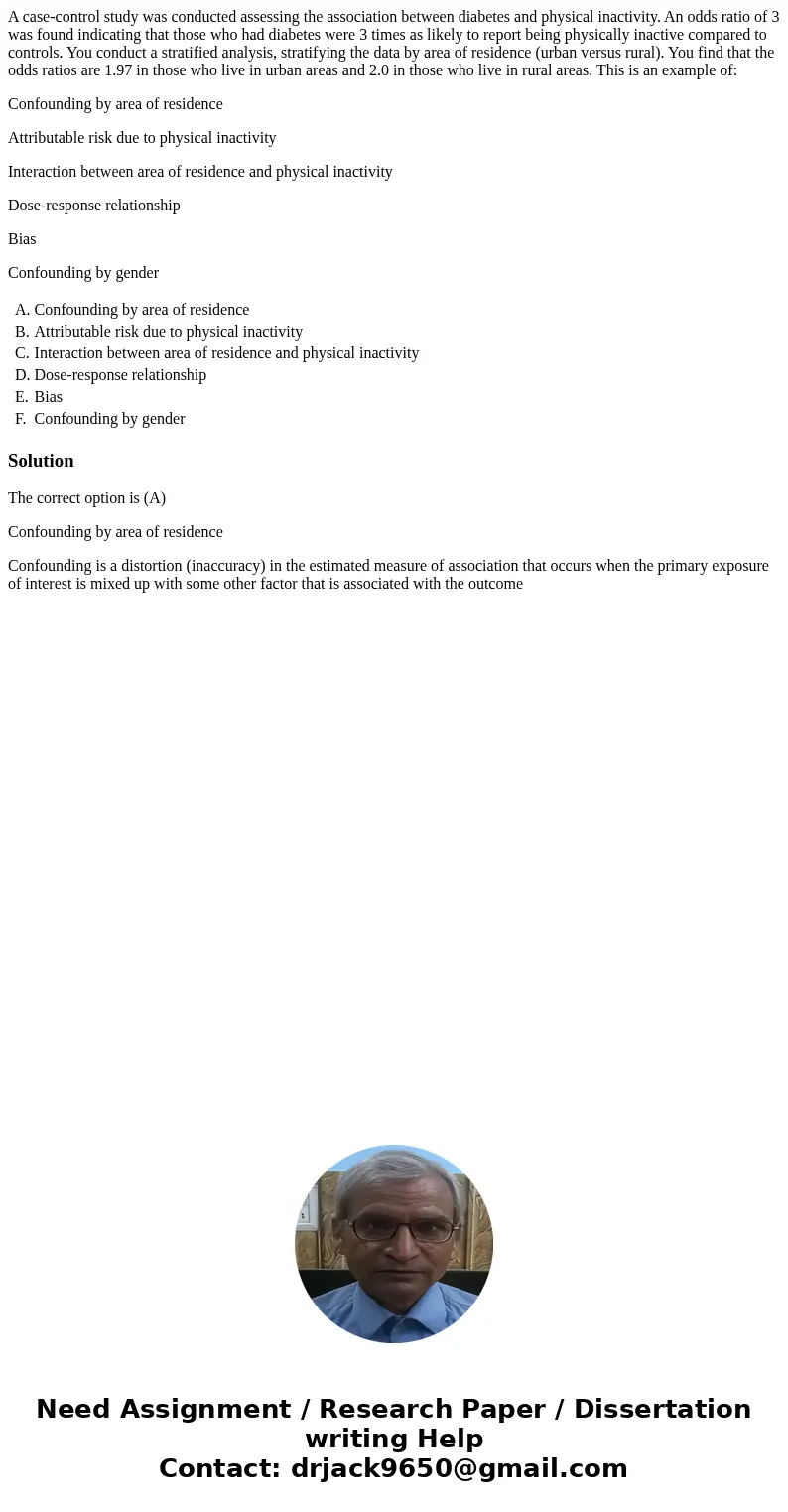A casecontrol study was conducted assessing the association
A case-control study was conducted assessing the association between diabetes and physical inactivity. An odds ratio of 3 was found indicating that those who had diabetes were 3 times as likely to report being physically inactive compared to controls. You conduct a stratified analysis, stratifying the data by area of residence (urban versus rural). You find that the odds ratios are 1.97 in those who live in urban areas and 2.0 in those who live in rural areas. This is an example of:
Confounding by area of residence
Attributable risk due to physical inactivity
Interaction between area of residence and physical inactivity
Dose-response relationship
Bias
Confounding by gender
| A. | Confounding by area of residence | |
| B. | Attributable risk due to physical inactivity | |
| C. | Interaction between area of residence and physical inactivity | |
| D. | Dose-response relationship | |
| E. | Bias | |
| F. | Confounding by gender |
Solution
The correct option is (A)
Confounding by area of residence
Confounding is a distortion (inaccuracy) in the estimated measure of association that occurs when the primary exposure of interest is mixed up with some other factor that is associated with the outcome

 Homework Sourse
Homework Sourse